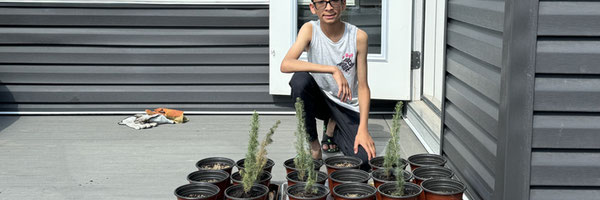Forest Fire Frenzy
Grade 6
Presentation
Hypothesis
I think that water would be the best option for putting out the fire and not harming the plants in the forest because water does not have any harmful chemicals. The reason I did not pick the fire retardants/extinguisher is because I learned from research that it has diammonium sulfate which reduces the pH of the soil which is not good for the plants. On the contrary, most plants prefer a pH of 6.2-6.8. Also water help plants grow and it puts out fire efficiently.
Research
1. What causes Forest Fires?
- Hot, dry weather and lightning strikes
2. What chemicals are used to put out fire?
Main focus in putting out fire: oxygen
- Water: evaporates quickly but not effective
Water puts out fire by absorbing heat to make the fuel cooler. If the flame cannot heat up the fuel it cannot be vaporized, so you cannot create a flame. They also add alkaline salt to water as a new anti-freezing agent. Class A fires (natural fires, paper plastics, cloth) use only water to put it out
- Foam: better than water but not so efficient
- Foam puts out fire by putting a “blanket” over the fire blocking all flammable vapors to escape from the fuel. The aqueous film-forming foams (AFFFs) have Perfluoroalkyl substances (PFAS). PFAS also acts as a blanket. PFAS foams are more effective than fluorine free foams. Water based foam extinguishers put out Class B fires (kitchen fires, flammable liquid
- How does the fluorine in the PFAS affect plants? The fluorine is absorbed by the plants and it takes up the place of other nutrients. It affects the process of photosynthesis and respiration
- Fire retardants: Best option of all but can degrade or break down due to the heat. Fire retardants used in BC have Phos-check or diammonium sulfate. Diammonium sulfate puts out fire by releasing carbon dioxide that cools and suffocates the fire. This ingredient is safe for agriculture fertilizers. BC crew uses a red dye in their retardants called Red Iron Oxide to see where the retardant landed. The red iron oxide is good for soil because it helps improve soil quality and gives nutrients to the plants.
- pH level:
- The general pH level of soils in Alberta is 6 or lower. Plants usually prefer pH of 6.2-6.8
- How does diammonium sulfate affect soil pH?
- (NH4)2SO4 is the chemical formula for diammonium sulfate and when its mixed with soil an acid is created and it helps put out the fire. The diammonium sulfate + soil produces alkaline ammonia and neutral calcium sulfate. The ammonia then reacts with hydronium ion to make nitric acid. So the soil that has around 6 pH now reduces to 5.5 pH. Diammonium sulfate reduced the pH to more acidic.
3. Alternatives/ Better Methods:
- Fire Extinguisher Powder: Fire extinguisher powder can be used as an effective fertilizer to help plants grow.
- Preventing Environmental Impacts:
- Learning how to control toxic firefighting trash and discuss with the firefighting rescue team
- Stop firewater from leaving by temporarily creating a barrier for drains or using a toxic blocker or firewater containment facilities.
- Ensure that the fire resistant chemicals comply with ozone depleting liquids and fluorinated gas regulations.
4. Effects of forest fire on the ecosystem (soil, plants, animals)
- Fire releases nutrients to help plants grow which means fire is sometimes good
- plants can adapt to fire in 4 ways, one is increased seed release, two is increased flowering and fruiting, third is some plants have fire resistant bark and buds, and fourth is plants sprout from undisterbed root systems.
- Fire releases nutrients like nitrogen which helps grass grow.
- How does heating affect the chemical properties of the soil? If hydrophobic polymers are in the soil water is blocked from getting in because of high temperatures.
- How does it affect the physical properties of the soil? The fire causes loss of soil structure and soil porosity. This is bad since water and minerals can’t get through.
- After forest fires the first few plants and trees that grow are aspen and birch grow within the first year because the trees are gone so nothing is blocking the sun. Jack pine and lodgepole pine have cones which involve seeds. These seeds come out by having the heat of the fire open the cone to release the seeds. The fire’s heat is what is required to open the cones to free the seeds. The fire gets rid of all competition. When the fire burns trees and plants, the nutrients go into the soil. Black spruce takes a long time to grow. White cedar and white spruce takes 150 years to grow back. They are rare in areas with multiple forest fires.
- How does fire fighting chemicals sometimes help plants grow?
- In a study they found out that the firefighting chemical ammonium polyphosphate helped the plants grow taller and it made twice as many plants as the unburned area. This acted as a fertilizer to help the plants grow. They also found that FFCs with phosphorus helped with shoot growth.
- What are the ingredients in the fire extinguisher we used?
- It has mono ammonium phosphate. Having phosphate will affect plant growth by increasing shoøt growth.
5. Lodegepole pine seeds
- They are called pioneer trees because they are important and because they're fast growing and easily grow back after a forest fire.
- What are the best growing conditions for these seeds? Sandy, lots of sun, loamy soil
- It does not tolerate flooding so you should not overwater them
6. Why do lodgepole pine trees grow better after a forest fire?
- All the big plants fell so there is room for the little ones to get sunlight without the big ones blocking it.
- The forest fire gets rid of their competition so they don't have to fight for nutrients.
- they need fire to release the seeds because their seeds are covered in a thick skin
7. How does the extinguisher chemicals affects animals and humans?
- Flame retardant chemicals can affect aquatic animals because animals get these chemicals and then more animals eat the other animals passing on the chemicals. This is bioaccumulation. Chemicals get into the water by rain and soil erosion.
-
Humans are affected by flame retardant chemicals…
8. Types of extinguishers:
- Types of extinguishers include: Class ABC, Class D, Class K, Carbon dioxide extinguisher. Class ABC can put out paper, cloths, oil, paint, and electrical equipment. Class K extinguishers can put out cooking oils and fats. Class D extinguishers can put out metal fires such as magnesium, sodium & potassium.Carbon dioxide extinguishers are usually used for putting out class B & C fires and can replace oxygen which makes the fire gone.
Variables
Controlled:
- Amount of fire extinguisher
- Temperature (Room temperature)
- pH meter
- Amount of soil
Manipulated: Chemicals used on plants (3 kinds - water, Class ABC dry chemical extinguisher, 1/2 concentration of extinguisher)
Responding: Growth of plants
Procedure
Procedure
- Get the soil and pots. Label each pot with the type of chemicals/treatment used
- Use a measuring cup and put 4 cups of soil to each pot
For grass seeds and spruce tree seeds:
- There are 9 grass seed pots (3 for each treatment - Water ½ extinguisher and extinguisher)
- There are 9 spruce tree pots (3 for each treatment - Water, ½ extinguisher and extinguisher)
**Note: Realized that the foam spray was the same as the extinguisher. Changed the treatment to ½ extinguisher instead.
- ½ extinguisher treatment: Add ½ tbsp of extinguisher then mix with 4 teaspoon water (labeled F1, F2, F3). This was done on August 18, 2024
- For extinguisher treatment: Measure equal amount (15ml/1 tablespoon) of fire extinguisher powder and add to the grass seed pots (E1, E2, E3)
- Water treatment: Add same amount of water to each pot (30-80mL)
- After sowing, plant the seeds regularly for all pots
- Sow the seeds about 6mm deep in the soil
- Plant the seeds and place it near a window
- Water the grass seed approximately every 3-4 days till the end of the experiment
- Start recording the height of the sprouted plant and pH about every week
- Make observations about the health/color of the plant and any other changes
Lodgepole pine seeds (See Appendix for full instructions)
- Soak the lodgepole pine seeds for 10 mins
- Put the seeds on a wet paper towel in a ziplock bag and store them in the fridge for 21 days.
- Place a peat pellet in a deep dish filled with water
- Wait for 20 mins
- Put the peat pellet in the plant pot
- Dig holes in the peat and plant the lodgepole seeds in the pots. Spread evenly.
- Add the lodgepole pine to medium size pots and replant with more soil.
- Fill with soil to the line on the pot, then add 30 ml of water to the soil. (12 pots)
- Then after planting, add 60 ml of water to each plant.
- For extinguisher treatment: Measure equal amount (15ml/1 tablespoon) of fire extinguisher powder and add to the lodgepole pine pots (E1 (T), E2 (T), E3 (T))
- For ½ extinguisher treatment: Add ½ tbsp of extinguisher then mix with 4 teaspoon water (labeled ½ E1 (T), ½ E2 (T), ½ E3 (T))
- Water treatment: Add same amount of water to each pot (30-80mL)





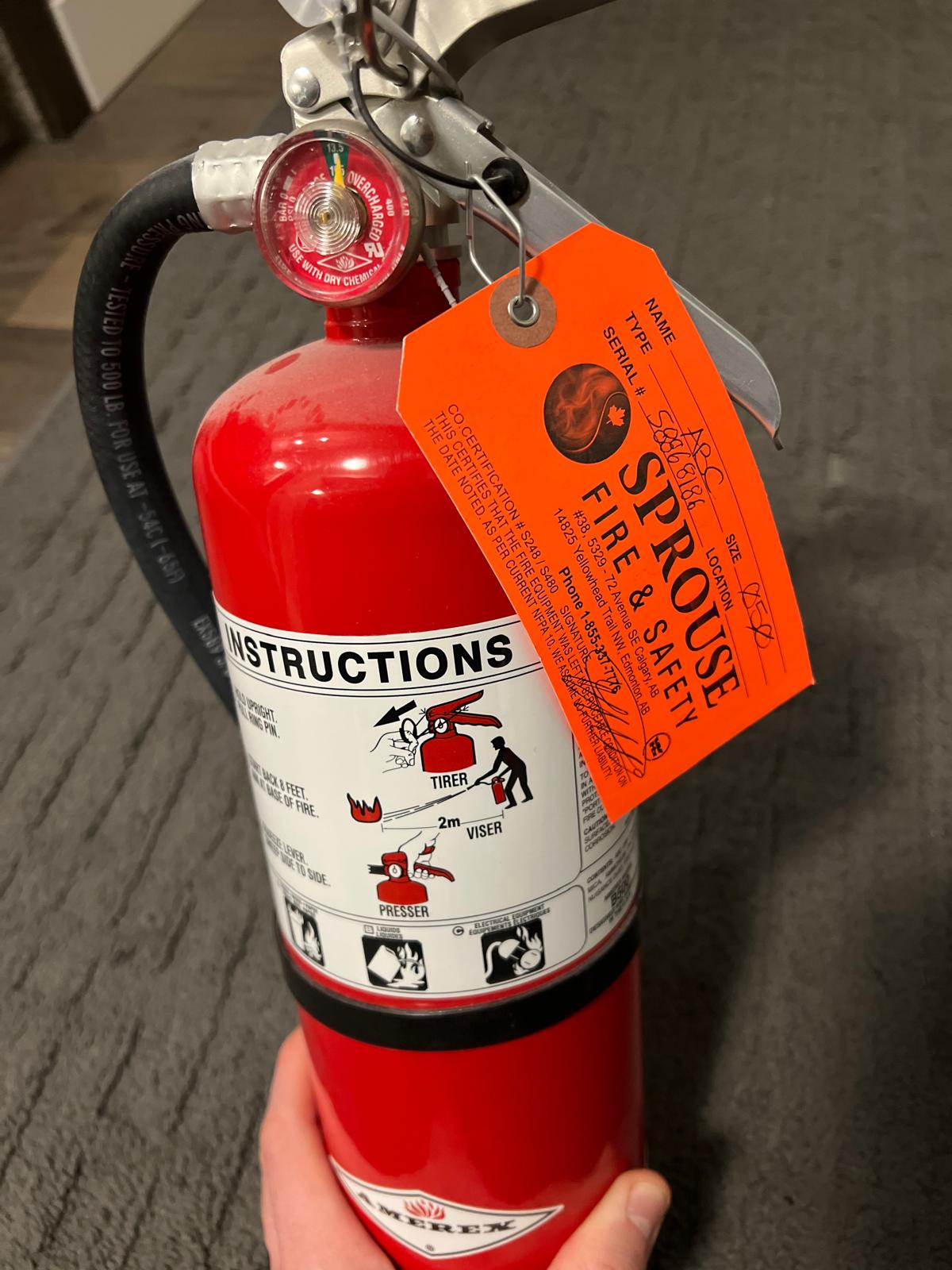

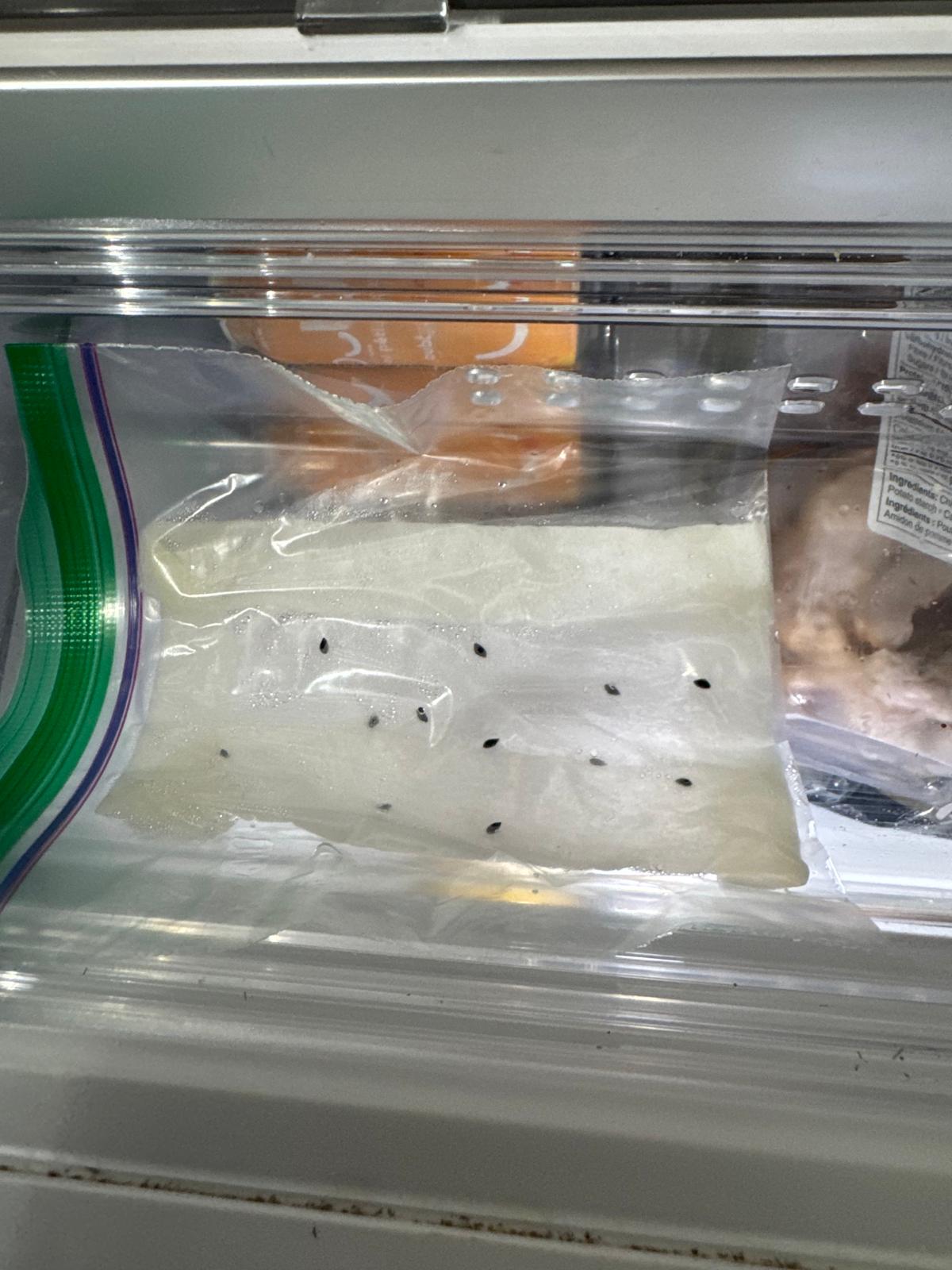

Observations
Trial 1 of experiment
- Plants: Grass seeds and spruce trees
- Treatments: Extinguisher, 1/2 extinguisher, water
Watering Schedule
150ml each time (too much water, so lower for next day) - June 22, 2024
- June 22, 2024 watered with 150 mL (too much)
- June 23rd - 70 mL
- June 24th - 100mL for seeds and 150mL for trees
- June 26 - 60 mL for both
- June 28 - 60 for both
- July 1 - 80 for both
- July 8th, 2024: At the beginning of the experiment, added grass seeds into pots and added spruce trees into another.
- All extinguisher plants died and two of the water treatment plants died. We knew the plants were dead because they were the color of brownish yellow instead of green.
- August 2nd, 2024: Trimmed the plants because we needed a good starting point for measuring the size.
- Trimmed the grass by trimming it down to the edges of the pot (recorded in table).
- Used gloves, goggles and mask while using the fire extinguisher. Collected the fire extinguisher by spraying it into a bucket. We used a 15 mL (1 tablespoon) measuring spoon to collect the extinguisher and spread it into the plant pots (E1, E2, E3, and W1)
- August 23rd, 2024: Extinguisher plants look very dead only few strands of green grass. Only 1-3 strands of green. Needles on the trees are flaky and falling off
Trial 2 of experiment
- Request for new lodgepole pine seeds - July 9, 2024
-
Image 10: July 9, 2024 - The spruce trees died, we got new tree seeds
- Plants: Grass seeds and lodgepole pine seeds
- Treatments: Extinguisher, 1/2 extinguisher and water
- August 18th, 2024: Started watering lodgepole pine seeds
- Sept 25, 2024: Replanted the lodgepole pine to pots
-
Added the lodgepole pine to med size pots and replanted with more soil. Filled soil to line the pot, added 30 ml of water to the soil. THen after planting add 60 ml of water to each plant.
- Used gloves, goggles and mask while using the fire extinguisher. Collected the fire extinguisher by spraying it into a bucket. We used a 15 mL (1 tablespoon) measuring spoon to collect the extinguisher and spread it into the plant pots (E1, E2, E3, and W1)
- Added ½ tbsp of extinguisher mixed with 4 teaspoon water (didnt mix well) on August 18th (labeled F1, F2, F3). Then added 1 tbsp water more to plant
- Extinguisher plants look very dead with only a few strands of green grass. Only 1-3 strands of green. Needles on the trees are flaky and falling off.
- Nov 10th, 2024: Started measuring the height and pH of lodgepole pine trees
- Nov 17th, 2023: W (Tree) wilted and E2 (Grass) wilted.
- Dec 1st, 2024: These plants wilted: 1/2 E3 (Grass), 1/2 E (Tree), E (Tree)
- The wilted plants are mostly dead, pines fell off and only one green piece.











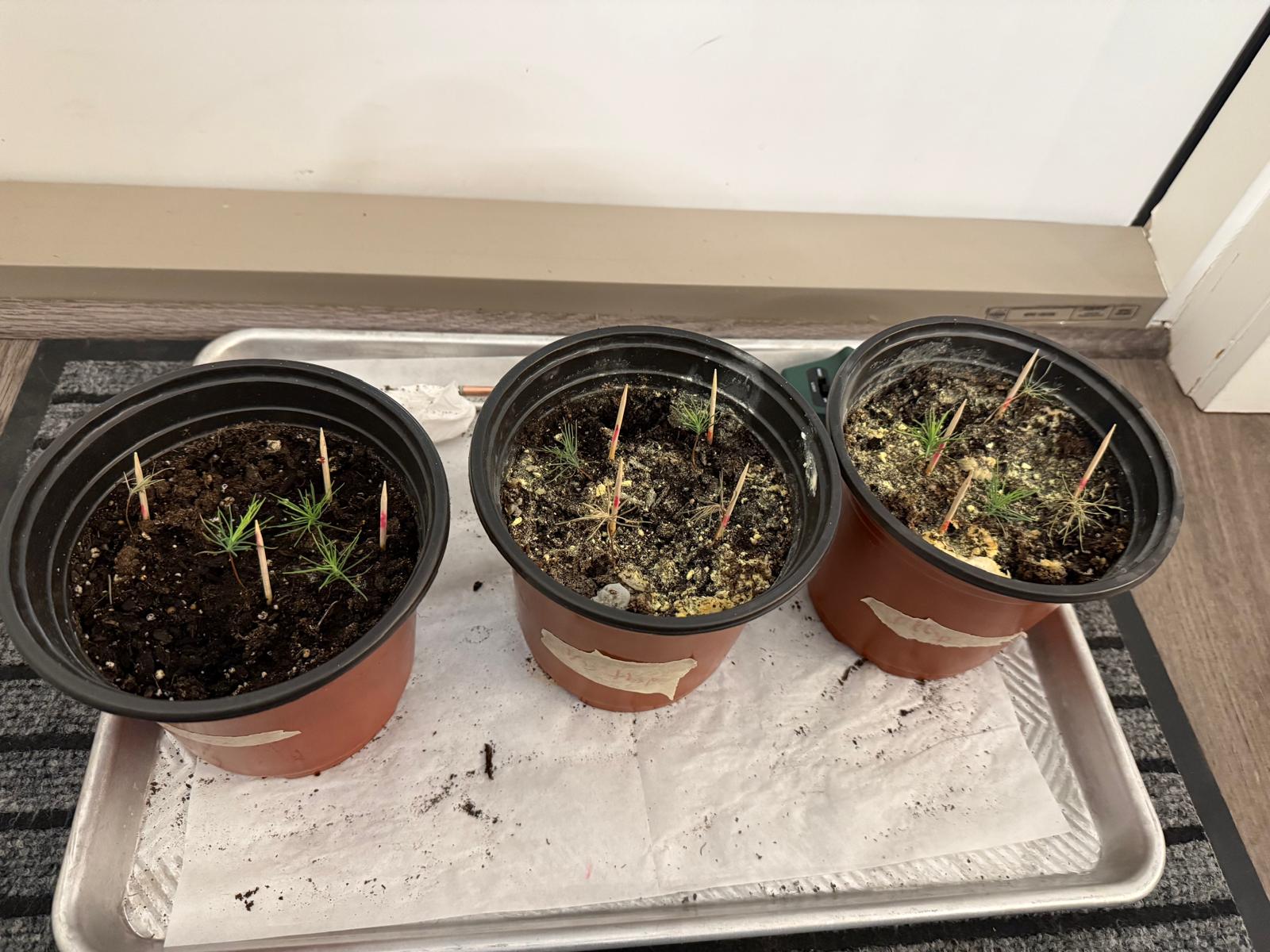

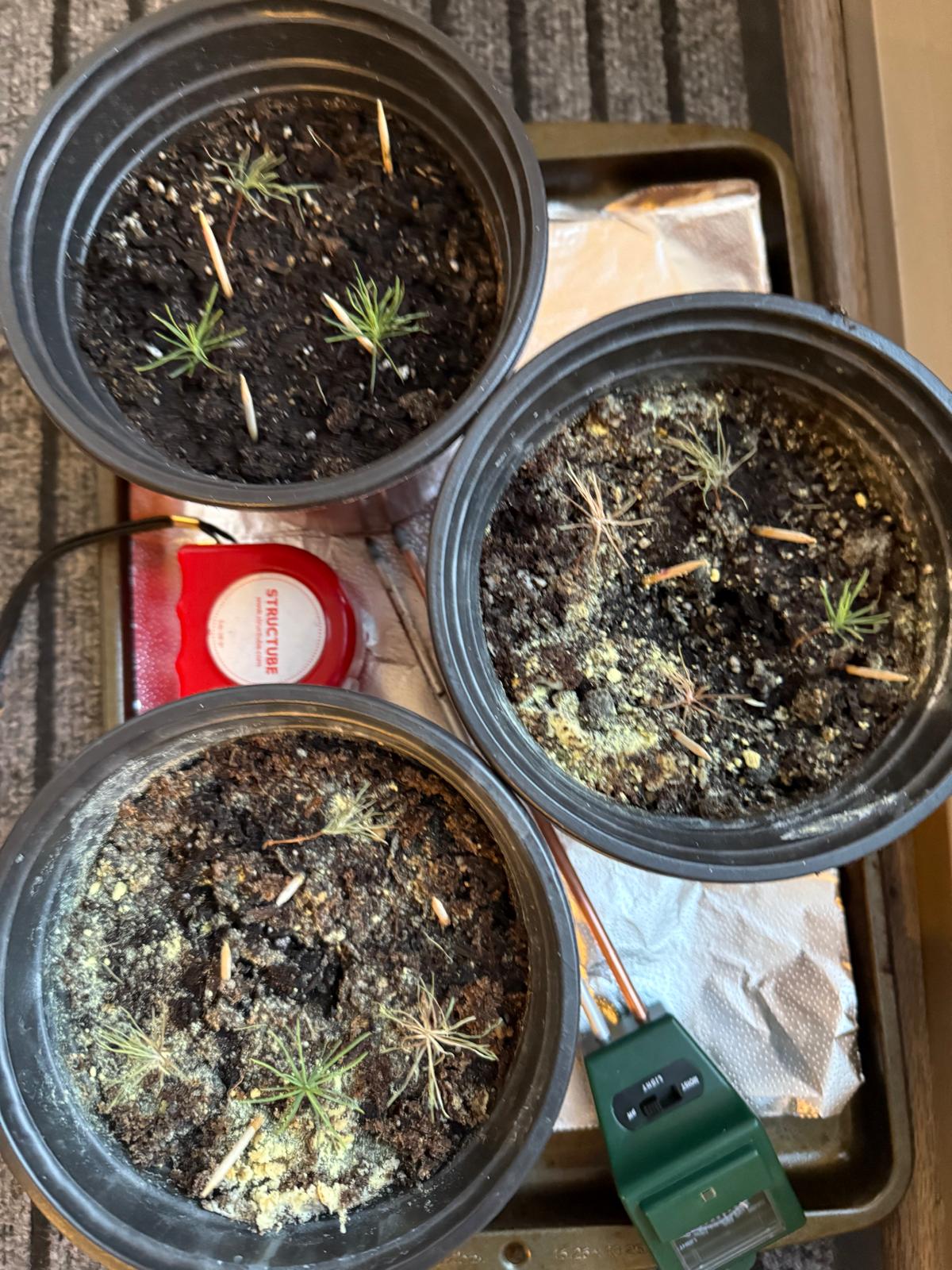
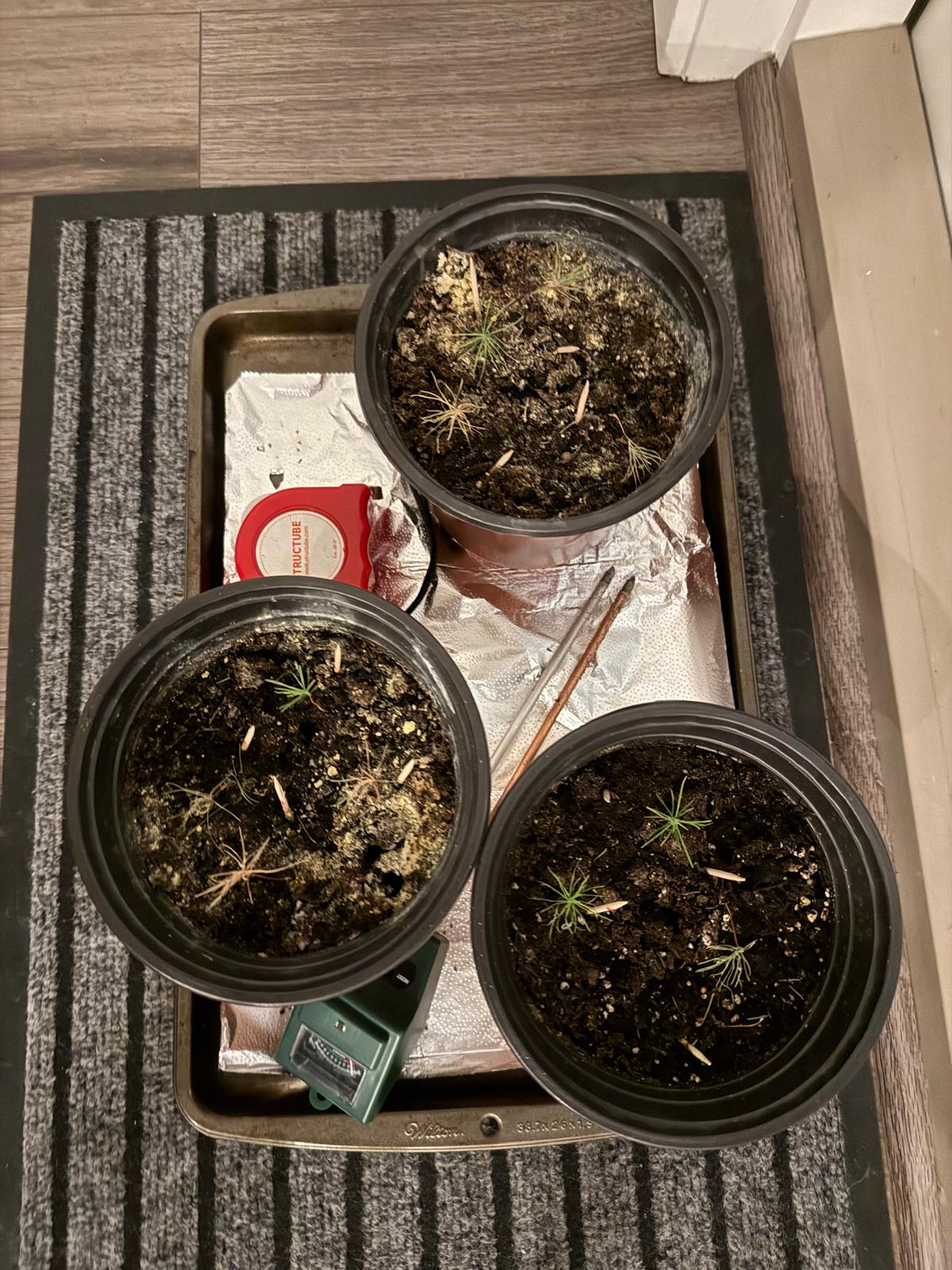
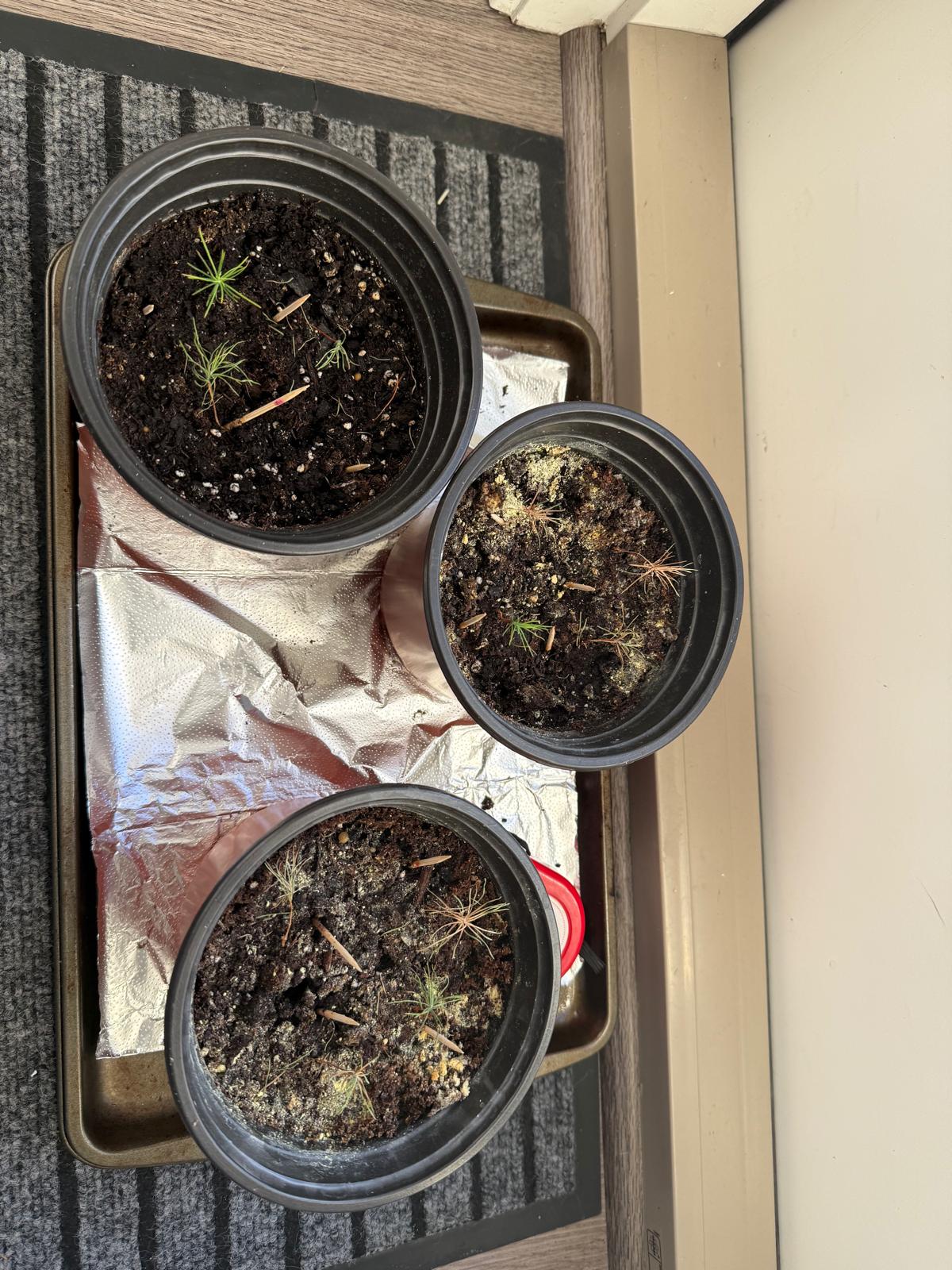
Table 0: The amount of water added to spruce trees and grass seeds (mL)
|
Date |
All 9 Spruce trees (mL) |
All 9 Grass seeds (mL) |
|
June 22, 2024 |
150 |
150 |
|
June 23, 2024 |
70 |
70 |
|
June 24, 2024 |
100 |
150 |
|
June 26, 2024 |
60 |
60 |
|
June 28, 2024 |
60 |
60 |
|
July 1, 2024 |
80 |
80 |
|
July 4, 2024 |
80 |
80 |
|
July 7, 2024 |
80 |
80 |
|
July 9, 2024 |
80 |
80 |
|
July 10, 2024 |
80 |
80 |
|
July 11, 2024 |
160 |
80 |
|
July 13, 2024 |
80 |
80 |
|
July 18, 2024 |
80 |
80 |
|
July 20, 2024 |
60 |
60 |
|
July 22, 2024 |
60 |
60 |
|
July 24, 2024 |
80 |
80 |
|
July 26, 2024 |
0 |
80 |
|
July 28, 2024 |
80 |
80 |
|
July 30, 2024 |
80 |
80 |
|
Aug 1, 2024 |
0 |
80 |
|
Aug 4, 2024 |
80 |
80 |
|
Aug 7, 2024 |
80 |
80 |
|
Aug 11, 2024 |
80 |
80 |
|
Aug 15, 2024 |
80 |
80 |
|
Aug 18, 2024 |
1 tbsp+7.5 mL |
1 tbsp+7.5 ml |
|
August 23 |
80 |
80 |
|
Aug 26, 2024 |
80 |
80 |
|
August 29, 2024 |
80 |
80 |
|
Sept 2, 2024 |
80 |
80 |
|
Sept 5, 2024 |
80 |
80 |
|
Sept 8, 2024 |
80 |
80 |
|
Sept 11, 2024 |
80 |
80 |
|
Sept 14, 2024 |
80 |
80 |
|
Sept 27, 2024 |
80 |
80 |
|
Sept 30, 2024 |
80 |
80 |
|
Oct 4, 2024 |
80 |
80 |
|
Oct 7, 2024 |
80 |
80 |
|
Oct 10 , 2024 |
80 |
80 |
|
Oct 13, 2024 |
80 |
80 |
|
Oct 16 , 2024 |
80 |
80 |
|
oct 20, 2024 |
80 |
80 |
|
Oct 23, 2024 |
80 |
80 |
|
Oct 27, 2024 |
80 |
80 |
|
Oct 31, 2024 |
80 |
80 |
|
Nov 3, 2024 |
80 |
80 |
|
Nov 6, 2024 |
80 |
80 |
|
Nov 10, 2024 |
80 |
80 |
|
Nov 14, 2024 |
80 |
80 |
|
Nov 21, 2024 |
80 |
80 |
|
Nov 26, 2024 |
80 |
80 |
|
Nov 30, 2024 |
80 |
80 |
|
80 |
80
|
Analysis
Table 1A: Information for spruce trees and grass seeds treated with ½ Extinguisher (instead of foam because extinguisher and foam were the same) measuring growth and pH. NOTE: Measured plants treated with ½ extinguisher treatment until August, because all trees had died on July 24, 2024.
|
Date |
Foam 1 |
Foam 2 |
Foam 3 |
Tree Foam 1 |
Tree Foam 2 |
Tree Foam 3 |
|
|
June 22, 2024 |
Height |
26.7 cm |
26.6 cm |
29.3 cm |
|||
|
June 23, 2024 |
Growth |
||||||
|
pH |
8 |
8 |
8 |
8 |
8 |
8 |
|
|
July 1, 2024 |
Growth |
8.6cm |
7cm |
7.8cm |
26.7cm |
28.3cm |
32.2cm |
|
pH |
|||||||
|
July 24, 2024 |
Growth |
24.1cm |
24.7cm |
24.9cm |
- |
35.6cm |
|
|
pH |
8 |
8 |
8 |
die |
die |
8 Brown needles-die? |
|
|
Aug 1, 2024 |
Growth |
30.2 |
29.5cm |
35 |
37 |
||
|
pH |
8 |
8 |
8 |
8 |
Table 1. Weekly record of plant height (cm) for grass seeds and white spruce trees and their pH (old data)
*Note: Tree Water 2 and 3 died on July 24, 2024 so we only tracked Tree water 1
*Note: Extinguisher Tree all died July 1, 2024
|
W1 (grass) |
W2 (grass) |
W3 (grass) |
W(tree) T1 |
E1 (Grass) |
E2 (grass) |
E3 (grass) |
E (tree) |
|
|
Height June 22 |
seeds |
seeds |
seeds |
T1 - 26 cm T2 - 20.3 cm T3 - 24.3cm |
seeds |
seeds |
seeds |
E1-29.6 cm E2-29.8 cm E3-27.5 cm |
|
pH June 23 |
7 |
7-8 |
7-8 |
- |
8 |
8 |
8 |
- |
|
Height July 1 |
9cm |
10.3cm |
10.4cm |
T1 - 27.6cm T2 - 21.1 cm T3 - 25.3cm |
7cm |
8.5cm |
7.5cm |
E1-30.5cm E2-29.8cm E3-27.8cm |
|
pH July 1 |
8 |
8 |
8 |
8 |
8 |
8 |
8 |
- |
|
Height July 4 |
27.3cm |
26.3cm |
27cm |
T1-31.1cm T2-dead T3-dead |
25.1 |
28.1 |
25.8 |
dead |
|
pH July 4 |
8 |
8 |
8 |
8 |
8 |
8 |
8 |
- |
|
Height Aug 1 |
32.3 |
37.9cm |
30.8cm |
T1-31.1cm |
28.1cm |
32.1cm |
33cm |
dead |
|
pH Aug 1 |
8 |
8 |
8 |
8 |
8 |
8 |
8 |
- |
|
Height Aug 9 |
8.1cm |
9.8cm |
10.6cm |
T1-37cm |
5.2 cm |
7.8cm |
7.7 cm |
31 cm |
|
pH Aug 9 |
8 |
8 |
8 |
8 |
8 |
8 |
8 |
8 |
|
Height Aug 16 |
12 cm |
18.5cm |
17.5cm |
T1-35.5cm |
8.5 cm |
7.9cm |
7.9 cm |
31 cm |
|
pH Aug 16 |
8 |
8 |
8 |
8 |
8 |
8 |
8 |
8 |
|
Height Aug 23 |
17.5 cm |
22.6cm |
23.2 cm |
T1-36.5cm |
6.3 cm |
9.8 cm |
13.7 cm |
29 cm |
|
pH Aug 23 |
8 |
8 |
8 |
8 |
7 |
7-8 |
7-8 |
7 |
|
Height Aug 30 |
18.7 cm |
23.5cm |
27.1 cm |
T1-36.6cm |
3.6 cm* |
4cm** |
14.8 cm |
29.6 cm *** |
|
pH Aug 30 |
8 |
8 |
8 |
8 |
7 |
7-8 |
7 |
7 |
|
Height Sep 7 |
19.8cm |
26.6cm |
26.6 cm |
T1-36.8cm |
5.2 cm |
dead |
14.7 cm |
27 cm |
|
pH Sep 7 |
8 healthy |
8 |
8 healthy |
8 |
8 |
8 |
8 mostly dead |
8 dying |
|
Height Sep 14 |
22.2 cm |
26.3cm |
27.4 cm |
T1-36.3cm |
dead |
dead |
14 cm |
26 cm |
|
pH Sept 14 |
8 |
8 |
8 |
8 |
8 |
8 |
8 |
8 |
Table 2. Total growth of grass seeds in cm .
Note: Only includes data from August 9th onwards, as all the plants died on July 24th, 2024
|
Treatment type |
Final height of the plants (cm) |
Initial height of the plants (cm) |
Total Growth (subtract the final height from original height) (cm) |
|
W1 |
22.2 |
8.1 |
14.1 |
|
W2 |
26.3 |
9.8 |
16.5 |
|
W3 |
27.4 |
10.6 |
16.8 |
|
E1 |
5.2 |
5.2 |
0 |
|
E2 |
4 |
7.8 |
-3.8 |
|
E3 |
14 |
7.7 |
6.3 |
Graph 1
Note: Only includes data from August 9th onwards, as all the plants died on July 24th, 2024
Observations:
- W3 grew the most. W3 stands for a plant that was treated with water. The 3 is what number/trial it is.
- E2 grew the least. E2 means it was treated with an extinguisher. The 2 means what number/trial it is
- Overall, water treatment did the best and extinguisher treatment did the worst.
Analysis for Graph 1:
The plant that grew the most was W3. This result was expected because water is healthy for plants and extinguisher is not so if it makes sense for a water treatment to do good.
The plant that grew the least was E2. This was expected since extinguisher is not good for since it reduces the plants pH by 0.5 and it hurts the plants. They prefer a pH of 6.5 to 6.8 and reducing it by putting an extinguisher on is not healthy for. The plants.
Graph 2
Observations: The best growth was for water treatment. The least growth was extinguisher treatment.
Analysis for Graph 2:
- The best treatment was water. The results are not surprising since it didn’t have any extinguisher. Extinguisher is not good for the plants since it reduces the plants pH by 0.5 and it hurts the plants. They prefer a pH of 6.5 to 6.8 and reducing it by putting an extinguisher on is not healthy for the plants.
- The treatment with the least growth was the extinguisher treatment plant. This makes sense because an extinguisher is not a good idea to have on your plants. It is harmful to them and water works better. This makes sense why extinguisher treatment is lower than the water treatment in growth.
Table 4. Average pH of plants
|
Treatment type |
Average pH |
|
Water |
8 |
|
Extinguisher |
7.67 |
Graph 3:
- Observations: Highest average was the water treatment. The lowest pH was extinguisher treatment.
- Analysis: Highest average of pH was for water treatment. This is expected because we used tap water. Tap water has chemicals that can affect the pH of the plants. Some chemicals include chlorine, arsenic, nitrates, and fluoride.
- The lowest average of pH was for extinguisher treatment. This is expected because of how it does not help plants grow. The chemicals affect plants by burning plant tissue and blocking the pores for gas exchange.
DATA FOR LODGEPOLE PINE TREES
Table 5. Weekly watering log for lodgepole pine seeds
|
Date |
Lodgepole pine |
|
Aug 18, 2024 |
15mL |
|
Aug 19, 2024 |
15mL |
|
Aug 20, 2024 |
15 |
|
Aug 21, 2024 |
15 |
|
Aug 22, 2024 |
30 |
|
Aug 23, 2024 |
30 |
|
Aug 24, 2024 |
15 |
|
Aug 25, 2024 |
30 |
|
Aug 26, 2024 |
30 |
|
Aug 27, 2024 |
30 |
|
Aug 28, 2024 |
15 |
|
Aug 29, 2024 |
15 |
|
Aug 30, 2024 |
30 |
|
Aug 31, 2024 |
30 |
|
Sept 1, 2024 |
15 |
|
Sept 2, 2024 |
30 |
|
Sept 3, 2024 |
30 |
|
Sept 5, 2024 |
30 |
|
Sept 6, 2024 |
30 |
|
Sept 7, 2024 |
30 |
|
Sept 8, 2024 |
30 |
|
Sept 10, 2024 |
80 |
|
Sept 16, 2024 |
30 |
|
Sept 17, 2024 |
30 |
|
Sept 18, 2024 |
30 |
|
Sept 19, 2024 |
30 |
|
Sept 20, 2024 |
30 |
|
Sept 21, 2024 |
30 |
|
Sept 22, 2024 |
30 |
|
Sept 23, 2024 |
30 |
|
Sept 24, 2024 |
30 |
|
Sept 25, 2024 |
Replanted lodgepole pine to pots - added 15 mL to soil and watered 60 mL |
|
Sept 27, 2024 |
80 |
|
Sept 30, 2024 |
80 |
|
Oct 4, 2024 |
80 |
|
Oct 7, 2024 |
80 |
|
Oct 10, 2024 |
80 |
|
Oct 13, 2024 |
80 |
|
Oct 16, 2024 |
80 |
|
Oct 20, 2024 |
80 |
|
Oct 23, 2024 |
80 |
|
Oct 27, 2024 |
80 |
|
Oct 31, 2024 |
80 |
|
Nov 3, 2024 |
80 |
|
Nov 6, 2024 |
80 |
|
Nov 10, 2024 |
80 |
|
Nov 14, 2024 |
80 (Added fire extinguisher chemicals) |
|
Nov 21, 2024 |
80 |
|
Nov 26, 2024 |
80 |
|
Nov 30, 2024 |
80 |
|
Dec 1, 2024 |
80 |
|
Dec 4, 2024 |
80 |
|
Dec 8, 2024 |
80 |
|
Dec 13, 2024 |
80 |
|
Dec 20, 2024 |
80 |
|
Dec 25. 2024 |
80 |
|
Dec 28, 2024 |
80 |
|
Jan 1, 2025 |
80 |
|
Jan 5, 2025 |
80 |
|
Jan 8, 2025 |
80 |
|
Jan 10, 2025 |
80 |
|
Jan 14, 2025 |
80 |
|
Jan 17, 2025 |
80 |
|
Jan 21, 2025 |
80 |
|
Jan 25, 2025 |
80 |
|
Jan 30, 2025 |
80 |
|
Feb 2, 2025 |
80 |
Table 6. Weekly record of plant growth (cm) for lodgepole pine seeds and their pH (new data). (W= Water treatment, 1/2 E = 1/2 tbsp extinguisher powder, E = 1 tbsp of extinguisher powder)
|
W1 |
W2 |
W3 |
W4 |
½ E1 |
½ E2 |
½ E3 |
½ E4 |
E1 |
E2 |
E3 |
E4 |
|
|
Height Nov 10 |
5 cm |
3.7 cm |
3 cm |
4.6cm (wilted) |
3cm |
3.2cm |
4.9cm |
4cm |
3.8cm |
4.3cm |
3.3cm |
4.6cm |
|
pH Nov 10 |
8 |
8 |
8 |
8 |
8 |
8 |
8 |
8 |
8 |
8 |
8 |
8 |
|
height Nov 17 |
5 |
4 |
3.4 |
5.1 (wilted) |
3.5 |
3.2 |
5.4 |
4 |
4.3 |
4.5 (wilted) |
3.6 |
4.7 |
|
pH Nov 17 |
8 |
8 |
8 |
8 |
8 |
8 |
8 |
8 |
8 |
8 |
8 |
8 |
|
Height Dec 1 |
4.8 |
3.6 |
3 |
4.7 (wilted) |
3.5 |
3.4 |
4.7 (wilted) |
3.9 (wilted) |
4.5 |
4.2 (wilted) |
3.5 |
4.6 (wilted) |
|
pH Dec 1 |
8 |
8 |
8 |
8 |
8 |
8 |
8 |
8 |
8 |
8 |
8 |
8 |
|
Height Dec 8 |
4.7 |
3.5 |
2.6 |
3.8 (wilted) |
3.1 |
3.3 |
4.2 (wilted) |
3.2 (wilted) |
3.3 |
3.5 (wilted) |
3.5 |
2.6 (wilted) |
|
pH |
8 |
8 |
8 |
8 |
8 |
8 |
8 |
8 |
8 |
8 |
8 |
8 |
|
Height dec 17 |
4.9 |
3.8 |
3.3 |
4.5 (wilted) |
3.3 |
3.9 |
4.8 (wilted) |
3.6 (wilted) |
4 |
4 |
3.5 |
3 (wilted) |
|
pH |
8 |
8 |
8 |
8 |
8 |
8 |
8 |
8 |
8 |
8 |
8 |
8 |
|
Height Dec 22 |
5.1 |
3.8 |
3.2 |
4.5 (wilted) |
3.3 |
3.9 |
4 (wilted) |
4 (wilted) |
4 |
5 (wilted) |
3.4 |
3.5 (wilted) |
|
pH |
8 |
8 |
8 |
8 |
8 |
8 |
8 |
8 |
8 |
8 |
8 |
8 |
|
Height Dec 29 |
5.1 |
3.5 |
3.4 |
5.4 |
3.3 |
4 |
5 |
4.4 |
4 |
4.8 |
3.5 |
3.5 |
|
pH |
8 |
8 |
8 |
8 |
8 |
8 |
8 |
8 |
7-8 |
7-8 |
7-8 |
7-8 |
|
Height Jan 5 |
5 |
3.3 |
4.6 |
4.9 |
3 |
4.4 |
5 |
4 |
4.1 |
4.6 |
3.3 |
5.3 |
|
pH |
7-8 |
7-8 |
7-8 |
7-8 |
8 |
8 |
8 |
8 |
7-8 |
7-8 |
7-8 |
7-8 |
|
Height Jan 12 |
4.8 (wilte) |
3.6 |
3.5 |
5 |
3 (wilted) |
3.8 |
4.5 |
4.1 |
3.5 |
3.7 |
3.6 |
3.6 |
|
pH |
8 |
8 |
8 |
8 |
7-8 |
7-8 |
7-8 |
7-8 |
7-8 |
7-8 |
7-8 |
7-8 |
|
Height Jan 19 |
3.8 |
4 |
3.5 |
4.7 |
4.5 |
3.5 |
4.9 |
4.2 |
4.2 |
4.6 |
3.8 |
4.1 |
|
pH |
8 |
8 |
8 |
8 |
7-8 |
7-8 |
7-8 |
7-8 |
7-8 |
7-8 |
7-8 |
7-8 |
|
Height Jan 25 |
3.8 |
4 |
3.8 |
3.5 |
4.9 |
3.5 |
4.6 |
4.2 |
4.2 |
4.6 |
3.6 |
4.5 |
|
pH |
8 |
8 |
8 |
8 |
7-8 |
7-8 |
7-8 |
7-8 |
7-8 |
7-8 |
7-8 |
7-8 |
|
Height Feb 2 |
5 |
4.8 |
3.9 |
3.1 |
4.4 |
3.8 |
5.2 |
4.3 |
4.4 |
4.5 |
3.7 |
4.5 |
|
pH |
8 |
8 |
8 |
8 |
7-8 |
7-8 |
7-8 |
7-8 |
7-8 |
7-8 |
7-8 |
7-8 |
Note: * mostly dead, only one very small green piece
** mostly dead one green piece
*** pines falling off very easily
Table 7. Record of plant growth with the different treatments
|
Treatment type |
Final height of the plants (cm) |
Initial height of the plants (cm) |
Total Growth (subtract the final height from original height) (cm) |
|
W1 |
5 |
5 |
0 |
|
W2 |
4.8 |
3.7 |
1.1 |
|
W3 |
3.9 |
3 |
0.9 |
|
W4 |
3.1 |
4.6 |
-1.5 |
|
½ E1 |
4.4 |
3 |
1.4 |
|
½ E2 |
3.8 |
3.2 |
0.6 |
|
½ E3 |
5.2 |
4.9 |
0.3 |
|
½ E4 |
4.3 |
4 |
0.3 |
|
E1 |
4.4 |
3.8 |
0.6 |
|
E2 |
4.5 |
4.3 |
0.2 |
|
E3 |
3.7 |
3.3 |
0.4 |
|
E4 |
4.5 |
4.6 |
-0.1 |
Graph 4:
Observations: The best growth was ½ E1 at 1.4 cm. The least growth was W4 at -1.5 cm.
Analysis: The best growth was ½ E1 at 1.4 cm. This result is a bit surprising since I expected water to do the best. Maybe ½ E1 did best because it didn't have a lot of extinguisher chemicals on it. Also, the ABC extinguisher is an approved NPK fertilizer. ½ extinguisher treatment probably did better than water and extinguisher treatments because it was balanced between no fertilizer and too much fertilizer.
The lowest growth was W4 and maybe since water is not a NPK approved fertilizer, it doesn't have some helpful chemicals for plants. NPK stands for nitrogen, phosphate and potassium. These are the three main nutrients plaNts need.
Table 8: Average pH of water, ½ extinguisher and extinguisher treatments for lodgepole pine tree
|
Treatment type |
Average pH |
|
Water |
7.96 |
|
½ E |
7.83 |
|
E |
7.75 |
Graph 5
Observations: The plant type that had the highest pH was the water treatment. The lowest pH was the extinguisher treatment.
Analysis: The preferred pH of lodgepole pine tree is 5 to 7.5. All the treatments gave a pH higher than this value range. This tells me that the plant did not grow in their preferred pH environment. The water treatment plants had the highest pH of all. The extinguisher treatment had the lowest pH of all. The results for the water treatment are unexpected because water is usually good for plants so I expected them to grow better. Maybe this happened because the tap water we used has chemicals that harm the plant.
Table 9. Average growth of water, ½ extinguisher and extinguisher treatments for lodgepole pine tree
|
Treatment type |
Mean growth of plants (cm) |
|
Water |
0.67* |
|
½ extinguisher |
0.65 |
|
Extinguisher |
0.275 |
*When I took the mean growth I got rid of the negative height of W (Tree) because it didn't make sense. Water should make plants grow, not shrink.
Graph 6:
Observation: The highest mean growth was at 0.67 cm for water treatment. The lowest mean growth was at 0.275 cm for extinguisher treatment.
Analysis: The results are expected since water did the best. Why I expected water to do the best was since plants need water to grow. Water does not have monoammonium sulfate like extinguisher so it doesn't give plants ammonium toxicity. I know that extinguishers reduce the pH of the soil. It has chemicals like monoammonium sulfate. Too much ammonium sulfate will make it experience ammonium toxicity which can cause leaves to burn, plant leaves to turn yellow, root damage and death. When the plant leaves turn yellow it means that the chloroplast is not turning the energy of the sunlight into nutrients. So the growth of the plants will stay the same or reduce. Maybe this is why the plants with extinguisher treatment grew the least.
Conclusion
I thought that water would be the best option for putting out the fire and not harming the plants in the forest because water does not have any harmful chemicals.
For the spruce tree and grass seeds experiment, for the water treatment the total average growth was 25.8 cm and for the extinguisher treatment it was 2.5 cm. The best treatment was water. The results are not surprising since it didn’t have any extinguisher. Extinguisher is not good for the plants since it reduces the plants pH by 0.5 and it hurts the plants. They prefer a pH of 6.5 to 6.8 and reducing it by putting an extinguisher on is not healthy for the plants.
For the half extinguisher in the lodgepole pine tree, the average growth was 0.65cm. For water treatment, the average growth was 0.67cm and the extinguisher treatment was the lowest at 0.275 cm. The result for water treatment was expected since water doesn't have harmful chemicals added to plants. The result for ½ extinguisher was about 0.65 and this was expected since I didn't think extinguisher would help the plants grow because they have monoammonium sulfate which can kill the plants by burning leaves. And the result for extinguisher treatment was about 0.275 and this was expected. I would expect the same results, but with this treatment having a lower growth. I say this since ½ extinguisher added half a tablespoon and extinguisher had a full tablespoon.
These are the things I would fix if I repeated the experiment again. when we were measuring the height of the plants some were drooped down. We lifted them up so that the plant was as tall as possible. Add a column in the weekly record of plant growth that is titled drooped and the purpose of that would say if the plants were drooped down or not and we could say how we were going to lift them up to measure more accurately.
The plants were dead soon into the experiment. We Should have given the plants more time to grow before adding the treatment because most plants seemed dead when we were doing the experiment. This may have affected the results since some may have died before adding the extinguisher but I didn't realize till after.
We may have overwatered the plants. We were watering 15mL then turned to 80mL. Overwatering could cause plants to suffocate and die. This could have been reverted by watering 30-50mL instead of 80mL.
We used a class ABC dry chemical extinguisher for all the treatments that needed the extinguisher. Other types of extinguishers include: Class D, Class K, Carbon dioxide extinguisher. Class ABC can put out paper, cloths, oil, paint, and electrical equipment. Class K extinguishers can put out cooking oils and fats. Class D extinguishers can put out metal fires such as magnesium, sodium & potassium.Carbon dioxide extinguishers are usually used for putting out class B & C fires and can replace oxygen which makes the fire gone.
Application
I found out that water grew better than extinguisher.
- Helps in real life because now firefighters can use chemicals on forest for that will put the flame out and not harm the plants.
- Firefighters can reduce amount of extinguishers to reduce harm to plants (see Slide 15)
Different ways to lower concentration of extinguisher:
- You can reduce the amount of extinguisher by shortening the area of the nozzle on a extinguisher.
- If nitrogen is added to the extinguisher, it can reduce the amount of concentration in it
Different techniques to put out fire:
- gases like argon to get rid of the oxygen - to put out the fire
- Use extinguishers with gas, ice and water to reduce the temperature of the fire.
Sources Of Error
Measuring plants: This was a source of error because when we were measuring the height of the plants some were drooped down. We lifted them up so that the plant was as tall as possible. We measured it using measuring tape. Sometimes I measured by myself. This might have affected the results because I had to lift and measure at the same time. Maybe when I am looking at the measurement my hand might droop along with the plant so that could be a source of error. When we lifted them up we can’t get the exact height so results may be slightly different.
Plants were dead soon into the experiment: I knew the plants were dead because of their yellow color and they were drooped down. For example the W4 lodgepole pine plant wilted right after starting the water treatment. The E2 plant wilted in week 2. This made it harder to measure because they were dropped down and I had to lift them up. If I added an extinguisher to a healthy plant it would most likely end up growing a bit before dying. We should have changed our procedure to let the plants grow for longer before adding the treatment.
Watering for lodgepole pine: The watering started at 15mL and then went to 80mL.
This could be an error because I might have watered too much and too much of anything is bad. Too much water could cause the plant to flood or lack of oxygen which suffocates them. When too much water comes onto the plants it carries nutrients to the bottom of the pot so the plant can't get the required nutrients. It causes root damage and it can affect how much water and nutrients the plant absorbs.
Citations
https://www.cs.ubc.ca/~tmm/courses/547-20/projects/hannah-preeti-roopal-rubia/update.pdf
https://climateatlas.ca/forest-fires-and-climate-change
Preventing Environmental Impacts
https://parks.canada.ca/nature/science/conservation/feu-fire/feuveg-fireveg/dirige-prescribed/role
https://www.ccohs.ca/oshanswers/safety_haz/fire_extinguishers.html
https://greensciencepolicy.org/harmful-chemicals/flame-retardants/wildlife-map
https://projectforest.ca/lodgepole-pine-seed-kit/
Procedure for Lodgepole pine taken from https://projectforest.ca/lodgepole-pine-seed-kit/
https://sequoiavalleyfarms.com.au/lodgepole-pine/
https://www.nist.gov/system/files/documents/el/fire_research/R0301079.pdf#:~:text=The%20halocarbon%20agents%20are%20delivered,inside%20diameter%20of%200.493%20inches.
Acknowledgement
I want to thank my mom (Reneeta Lakhani) for helping me plant the plants.
I want to thank my teachers for helping me learn more about fires and analyze graphs.
I want to thank Blessy Mathew for helping me understand areas of my project.

